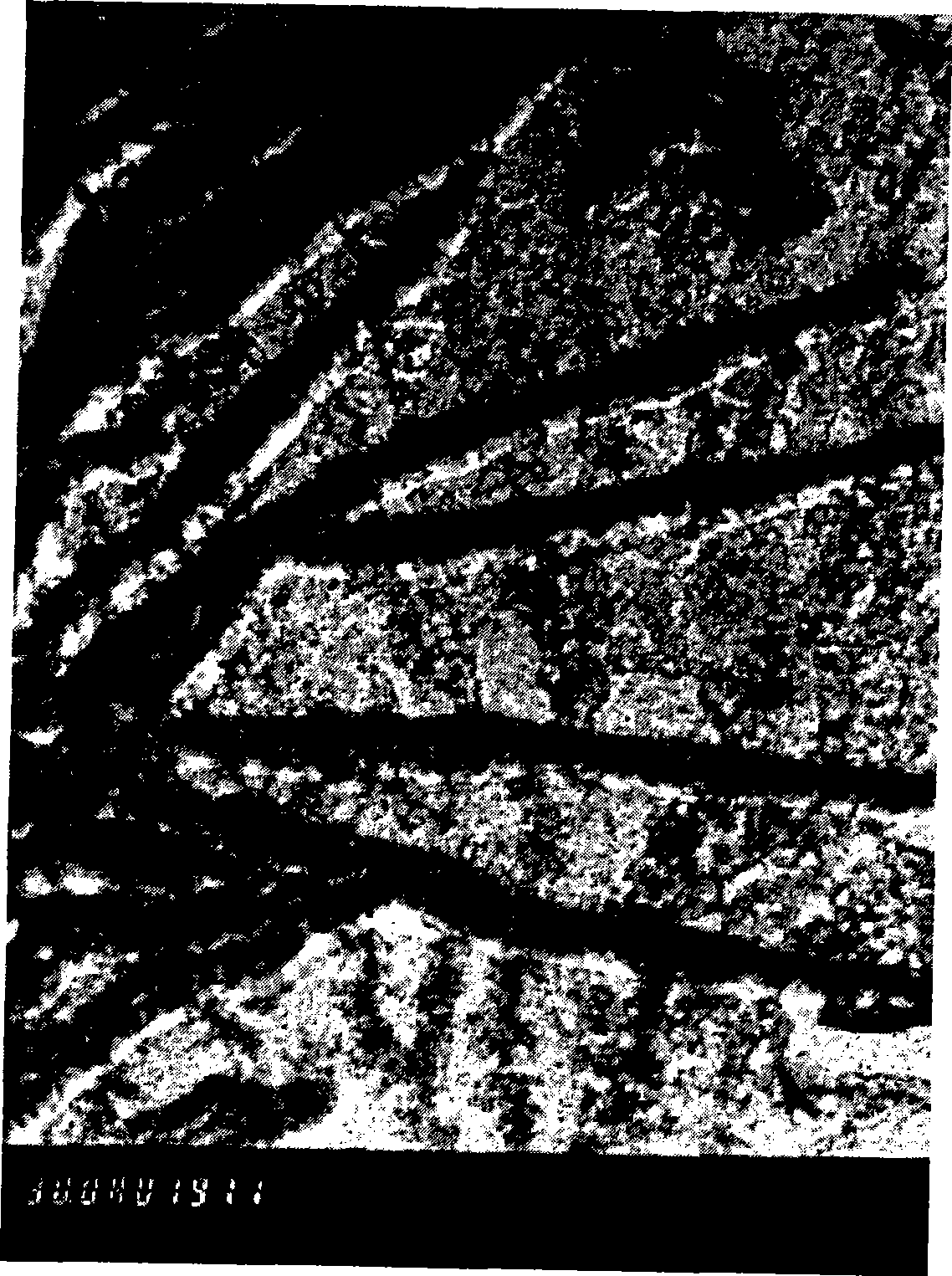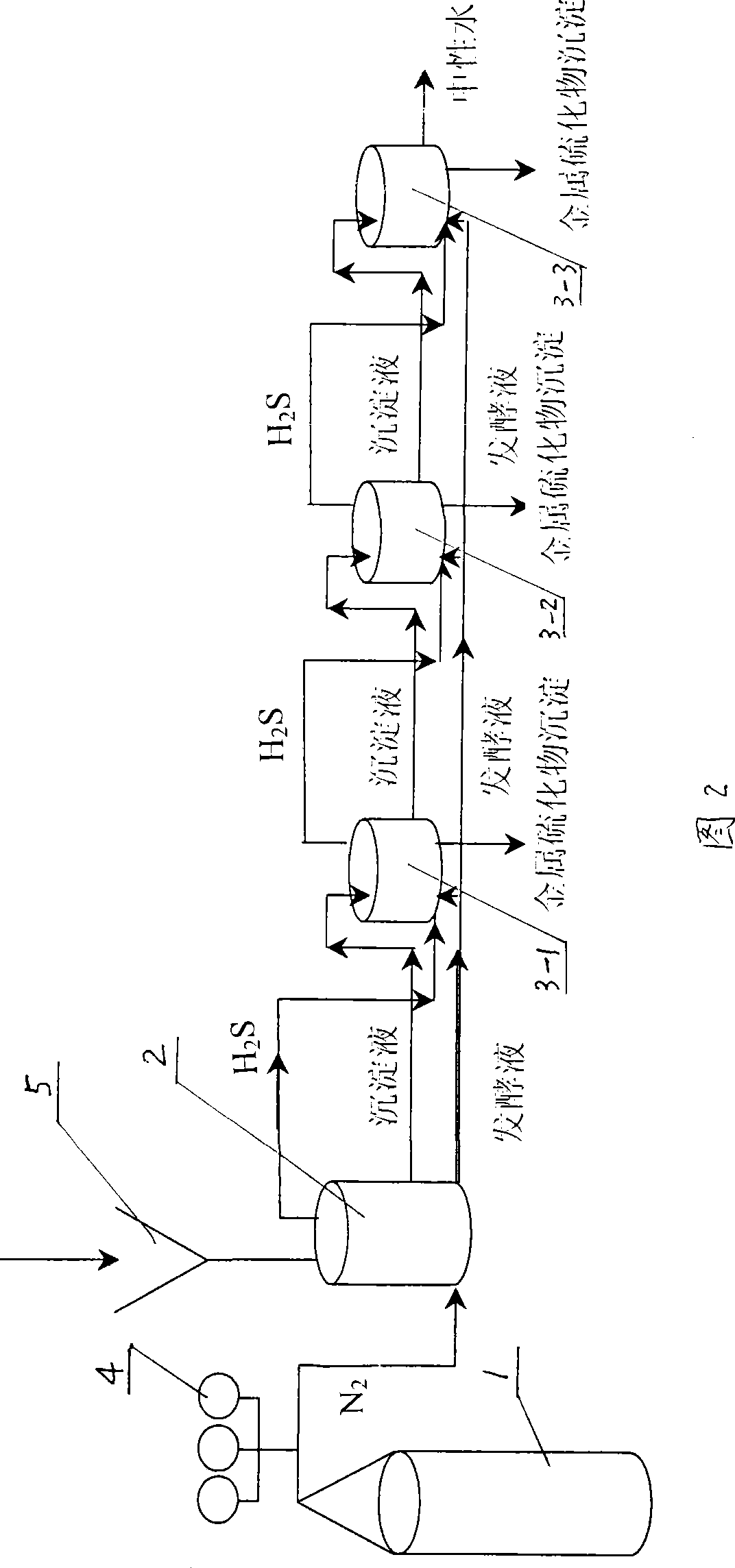A strain of sulfate reduction bacteria and process for using the same for treating acidic mine wastewater with straw as carbon nitrogen source
A sulfate and process technology, applied in the field of microorganisms, can solve the problems of unfavorable industrial production promotion and application, high price, and high consumption cost of pharmaceuticals, and achieve the effects of reducing bacterial culture cost, wide pH adaptability, and wide growth temperature.
- Summary
- Abstract
- Description
- Claims
- Application Information
AI Technical Summary
Benefits of technology
Problems solved by technology
Method used
Image
Examples
Embodiment 1
[0016] First, the sulfate-reducing bacteria strain preserved at low temperature (the bacterial name is Desulfotomaculum halophilum RETECH-SRB-II, preservation unit: China National Center for Typical Culture Collection, address Wuhan University, preservation date: May 11, 2007, preservation registration No.: CCTCC NO: M207061) with 10-20ml medium (K 2 HPO 4 , 0.1-3g; (NH 4 ) 2 SO 4 , 0.5-5g; NaHCO 3 , 0.1-3g; CaCl 2 , 0.1-1g; MgSO 4 , 0.2-2.5g; sodium lactate, 0.5-5g; trace element, 10-15ml; trace vitamin, 10-15ml; cysteine hydrochloride, 0.1-2g; yeast extract, 0.5-5g; (NH 4 ) 2 Fe(SO 4 ) 2 ·6H 2 O, 0.1-2g; distilled water, 1L) in a test tube for activation. The activated strains are transferred into 100-200ml of culture solution, and after 18-36 hours of cultivation, the culture is expanded to 300-500ml with 5-20% (v / v) inoculum.
[0017] Cut the fresh straw into small pieces of 1-3cm, pile them into piles, soak the pile with water, cover it with plastic film, ke...
Embodiment 2
[0020]First, the sulfate-reducing bacteria strain preserved at low temperature (the bacterial name is Desulfotomaculum halophilum RETECH-SRB-II, preservation unit: China National Center for Typical Culture Collection, address Wuhan University, preservation date: May 11, 2007, preservation registration No.: CCTCC NO: M207061) with 10-20ml medium (K 2 HPO 4 , 0.1-3g; (NH 4 ) 2 SO 4 , 0.5-5g; NaHCO 3 , 0.1-3g; CaCl 2 , 0.1-1g; MgSO 4 , 0.2-2.5g; sodium lactate, 0.5-5g; trace element, 10-15ml; trace vitamin, 10-15ml; cysteine hydrochloride, 0.1-2g; yeast extract, 0.5-5g; (NH 4 ) 2 Fe(SO 4 ) 2 ·6H 2 O, 0.1-2g; distilled water, 1L) in a test tube for activation. The activated strains are transferred into 100-200ml of culture solution, and after culturing for 18-36 hours, expand the culture to 300-500ml with 5-20% inoculum size as seed solution.
[0021] Cut the fresh straw into small pieces of 1-3cm and pile them into piles, soak the pile with water, cover it with plas...
PUM
 Login to View More
Login to View More Abstract
Description
Claims
Application Information
 Login to View More
Login to View More - R&D Engineer
- R&D Manager
- IP Professional
- Industry Leading Data Capabilities
- Powerful AI technology
- Patent DNA Extraction
Browse by: Latest US Patents, China's latest patents, Technical Efficacy Thesaurus, Application Domain, Technology Topic, Popular Technical Reports.
© 2024 PatSnap. All rights reserved.Legal|Privacy policy|Modern Slavery Act Transparency Statement|Sitemap|About US| Contact US: help@patsnap.com









